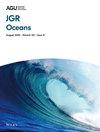Subsurface Marine Heatwaves in the South China Sea
Abstract
Marine heatwaves (MHWs), extreme warm ocean temperature events, greatly impact marine ecosystems. While most MHW studies in the South China Sea (SCS) focus on the sea surface, subsurface characteristics remain less explored. This study uses high-resolution (1/12°) ocean reanalysis data sets to assess MHW properties with depth in the SCS from 1993 to 2022. We find that MHW intensities are typically stronger at subsurface levels (30–150 m) than at the surface, with significant spatial variations. The vertical structures of MHW maximum and cumulative intensities peak between 70 and 100 m with 2.7°C and 63°C days, respectively; MHW annual days and duration increase gradually from 10 to 2,000 m with duration peaks at 2,000 m (∼60 days), four times longer than that at the surface. The SCS experienced two major periods of extensive El Niño-related subsurface MHWs from 1997 to 2002 and 2008 to 2014, with MHWs reaching depths of 150 m and covering 70% of the upper 40 m. Strong El Niño events strengthen the western Pacific subtropical high, reducing summer monsoon winds, weakening coastal upwelling east of Vietnam, and increasing water temperatures. Regions of elevated eddy kinetic energy in the SCS suggest that significant mesoscale eddy activities are situated east of Vietnam. In addition, notable eddy heat transport was observed in the above region and west of the Luzon Strait in the upper 1,000 m. This may help to explain the high maximum and cumulative intensities of MHWs exceeding 100 m in the northern SCS.

 求助内容:
求助内容: 应助结果提醒方式:
应助结果提醒方式:


